In Zagreb you can feel the atmosphere of the metropolis, but to the luck of its residents and visitors, you will also enjoy personal encounters. From the hotel to the theatre, around the Upper Town or along the narrow Lower Town streets, nothing has been lost in time… And you can visit it all on foot – it surely brings particular emotions. Nature Park Medvednica is situated on the north of Zagreb. The highest peak is Sljeme (1033 m), a well-known skiing resort with well-equipped touristic facilities and the home of FIS race Snow Queen Trophy. Thanks to its extraordinary natural beauties and the proximity of the capital, it has become the favourite promenade of the citizens of Zagreb.
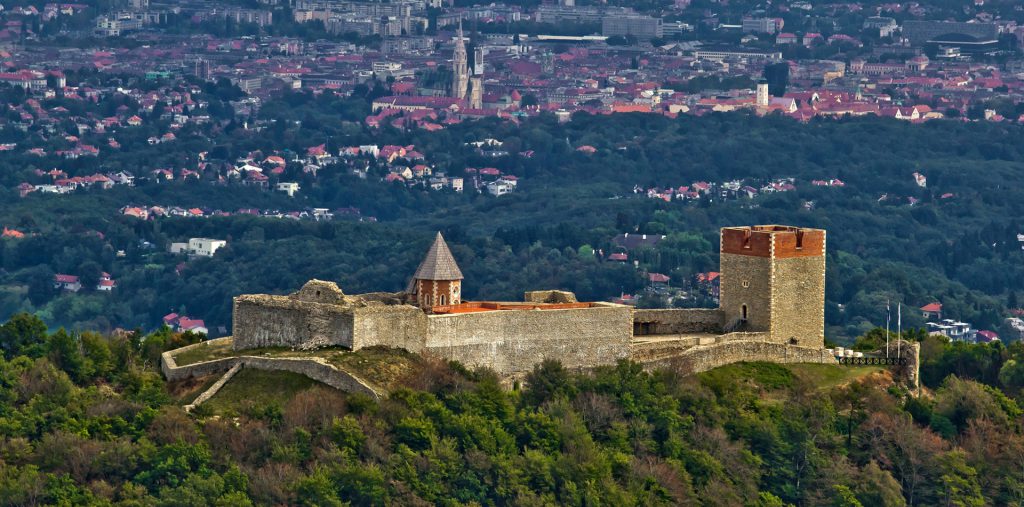
Medieval town of Medvedgrad (south part of Medvednica)
Nature Park Lonsko Polje is the largest protected swamp area, not only in Croatia, but also in the whole Danube area, with the total surface of 50 650 ha. It is located in the alluvial plain of the River Sava in the central basin of the River Sava, between Sisak and Stara Gradiška.
Rastoke is a spectacular play of nature in the place where the river Slunjčica flows into the river Korana. The nature played with blue-green waters of the river Slunjčica and divided them into a number of small lakes, streams and waterfalls, the most beautiful of which are Buk, Hrvoje and Vilinakosa. In the holes of Rastoke limestones, there are now otters who came back after a long period of being absent.
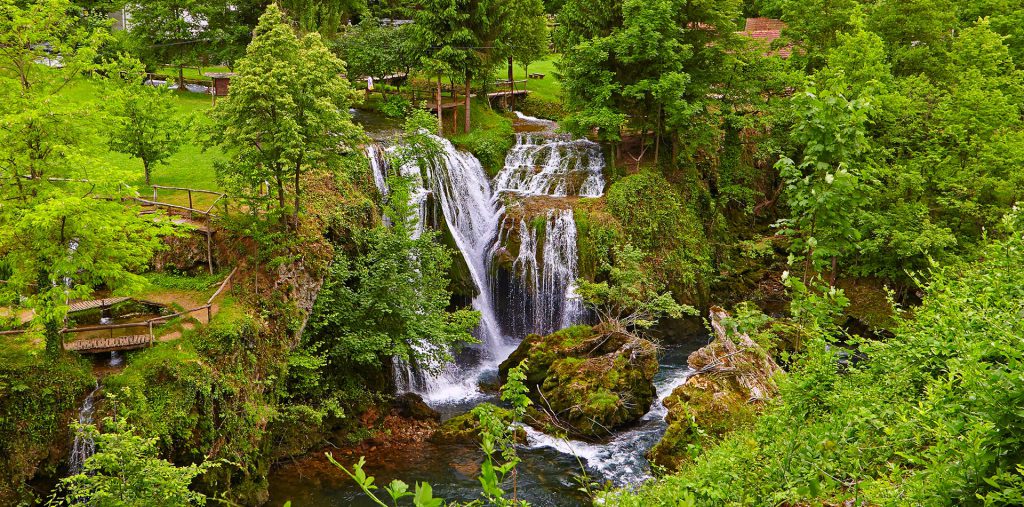
Rastoke
The Plitvice Lakes National Park is a special geological and hydro-geological karst phenomenon. It was declared a national park on April 8th, 1949. It is the biggest, the oldest and the most visited national park in Croatia.
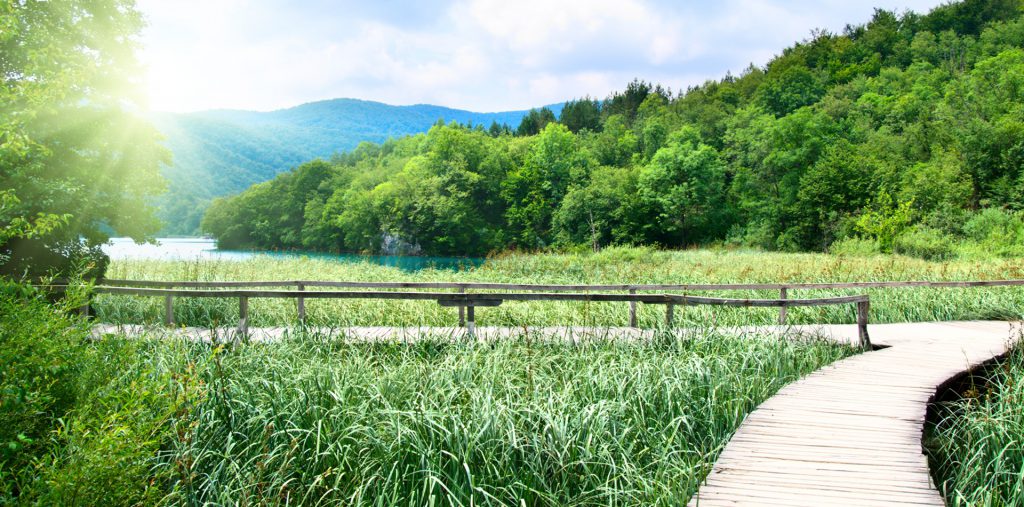
Ample forests, outstanding natural beauties of lakes
Velebit Nature Park is the most significant endemic centre of flora and fauna in Croatia. On Velebit there are 1854 registered plant species, 79 of which are endemic. Just because of this, the area is often referred to as the „centre of endemism“. Thanks to its unique natural base, exceptional geomorphological forms and outstanding forests, the area of Velika and Mala Paklenica was declared a national park already in 1949. The main reason was to protect the most preserved and the biggest forest system in Dalmatia.
Famous landmarks of the National park Paklenica are indigenous black pine forests, several types of beech forests and deep canyons with streams – flows of Velika and Mala Paklenica. A larger space of NP Paklenica is characterized by a rich and diverse cultural heritage.
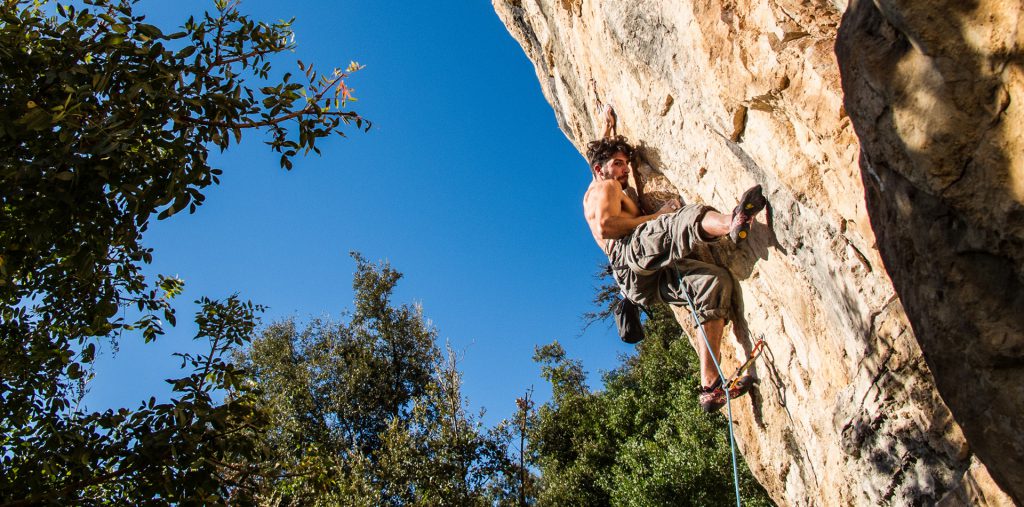
Paklenica is the most popular destination for climbers in Croatia
Zadar is one of the most popular touristic destinations in Croatia that was declared “the centre of the party on the Adriatic” by the London Times, while the Guardian describes it as “the new Croatian capital of cool”. Day or night, Zadar will amaze you with its special atmosphere and rich life.
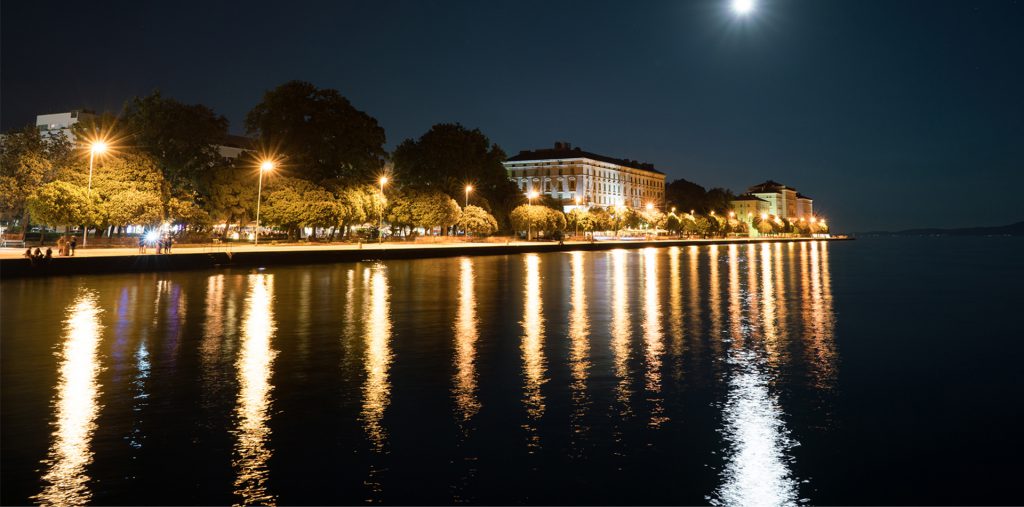
The City of Zadar is the city with a 3000 year old history
The area of the Nature Park Telašćica is an area full of opposites and quiet and peaceful beaches. On one side there is a flat coast line and on the other side the coast is wild and steep. There are pine and oak woods on the one side and bare rocky ground on the other side, vineyards and olive groves and degraded vegetation that covers dry habitats.
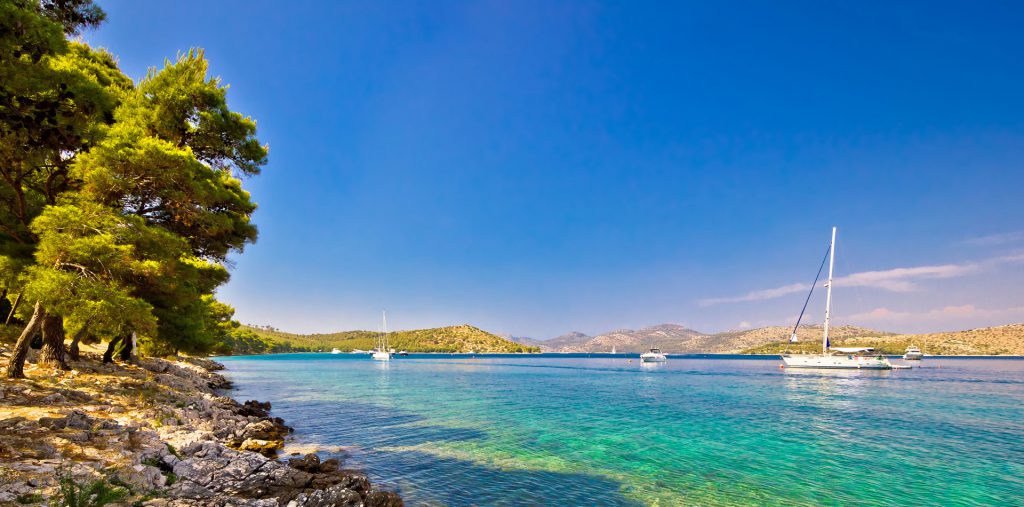
The Bay of Telašćica
National Park Kornati is the biggest part of the Kornati aquatorium that was proclaimed a national park in 1980 due to its outstanding landscape, interesting geomorphology, rugged coastline and exceptional biodiversity of the marine system.
Krka National Park became a national park on January 24th, 1985 and it is the seventh national park in Croatia famous for a great number of lakes and cascades. It got its name from the river Krka that flows through the park. This national park is located in central Dalmatia, downstream of Miljevac and only a few kilometres on the northeast of Šibenik.
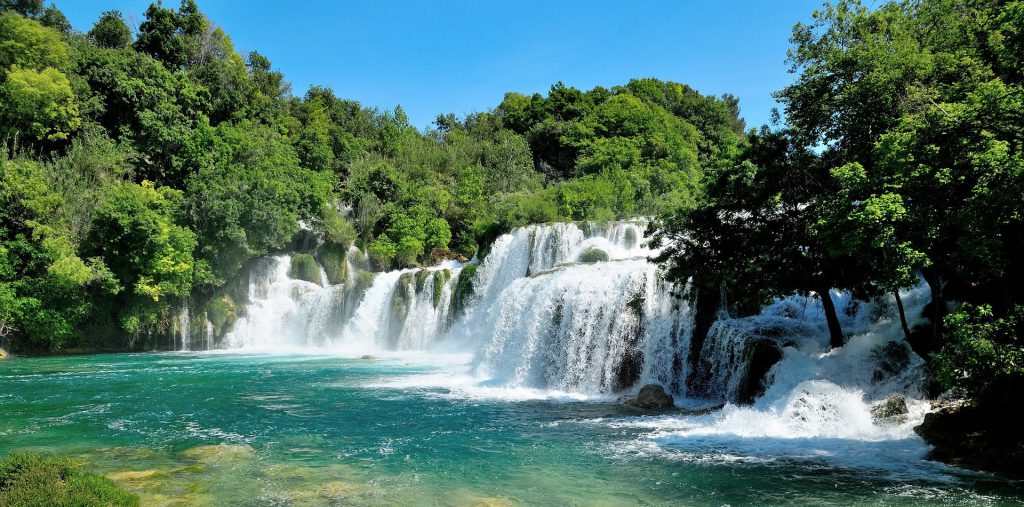
Waterfall on the river Krka
Delta of the river Neretva is a valley on the south of the Croatian coast on the Adriatic Sea which river Neretva forms at its mouth. An initiative to protect the whole valley as a Neretva Delta Nature Park is in progress.
Ston is a medieval town whose history dates back to the early 14th century. This is the town with the longest stone wall in Europe (5.5 km), narrow and quiet streets, old elegant houses and traces of ancient cultures all over the city. The City of Korčula developed on a small peninsula on the northeast part of the Island of Korčula, opposite the peninsula of Pelješac. Korčula is thought to be the most beautiful planned medieval city in Croatia. The old part of the city is surrounded by medieval walls, while the streets are made in the form of fish bone.
National park Mljet is the oldest marine park in the Mediterranean. It covers the northwest third of the island which is a total of 5375 hectares of protected land and the surrounding sea. This area was declared a national park in November 1960, while the marine part was included only in 1997. The status of the national park was awarded due to area’s incredible cultural and historical heritage that includes the period of the Illyrian tribes, the Roman Empire and the Republic of Ragusa.
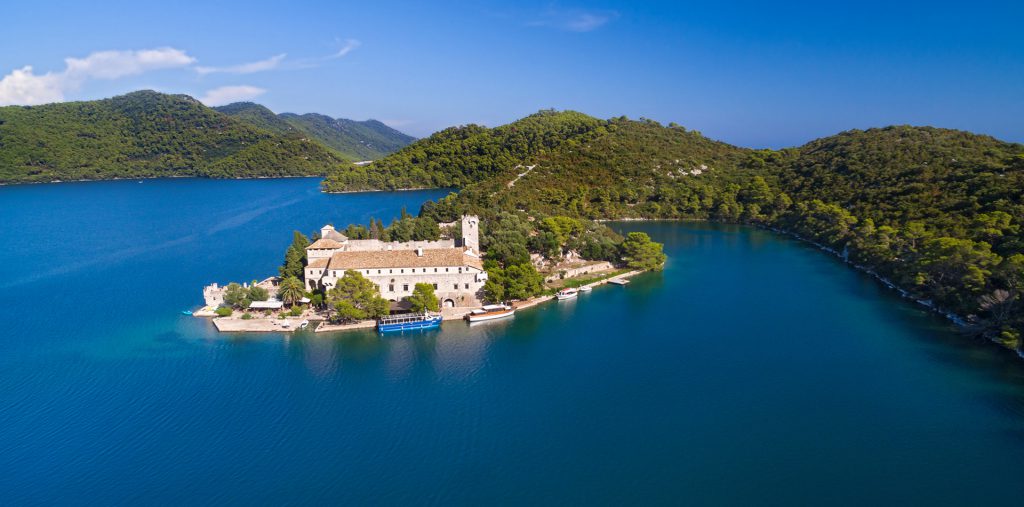
Islet of St Mary with a church and a Benedictine monastery
Dubrovnik’s thousand-year-old history is visible in every part of the city that is both a museum and a live stage at the same time – an ideal mix of history and modernity. Since 1979 Dubrovnik has been under the protection of UNESCO as a consistent, high-quality entirity of the city walls, historical buildings, streets, squares and numerous monuments of religious and popular architecture.
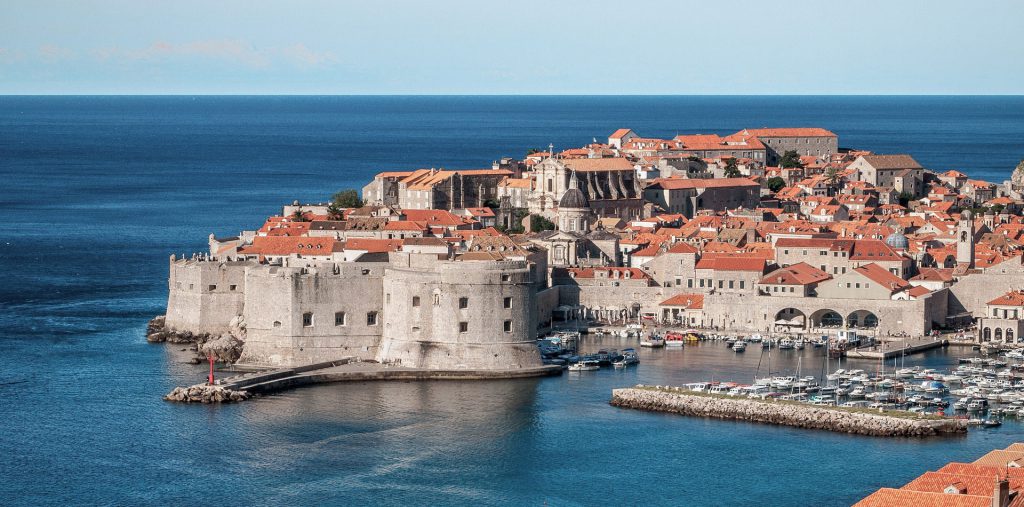
The city walls of Dubrovnik are one of the largest fortification monuments in Europe
Zagreb – Departure
*For more detailed information you can download pdf files of Active Discover Croatia activities and brochure.
Download file:
ACTIVE DISCOVER CROATIA – activities –
Download file:
ACTIVE DISCOVER CROATIA – brochure –
Discover Croatia and all its beauties in an active way through our unique propositions that offer something for everybody – your pleasure comes first!
